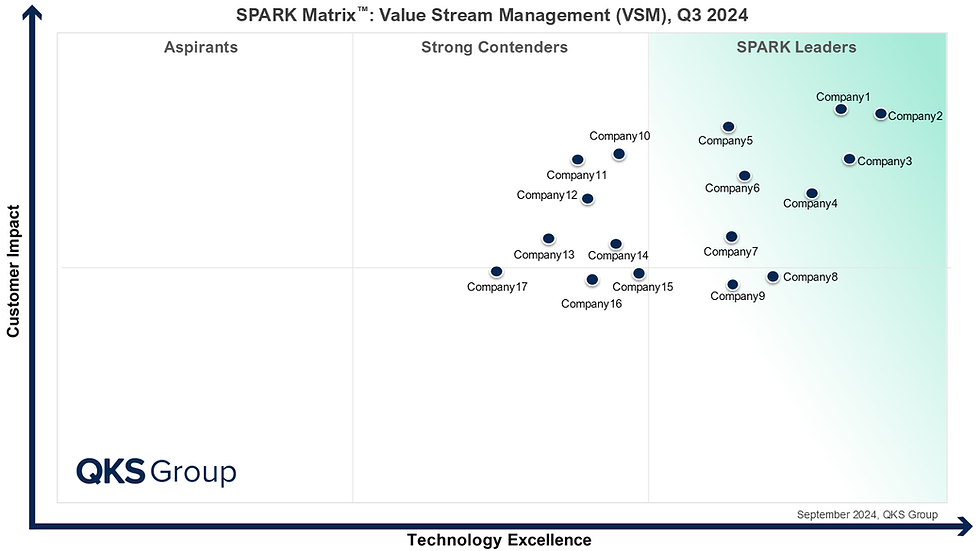AI-Powered Value Stream Management: Improve Flow Efficiency
- Gauri Kale
- Aug 22, 2025
- 3 min read

In today’s fast-paced digital landscape, enterprises are under constant pressure to deliver software solutions faster, with higher quality, and greater customer satisfaction. Traditional methods of software delivery often fall short, plagued by inefficiencies, bottlenecks, and siloed teams. This is where Value Stream Management (VSM) emerges as a transformative approach. By streamlining the procedures involved in envisioning, accomplishing, and delivering software, VSM ensures organizations can meet business goals while delivering maximum value to customers.
What is Value Stream Management (VSM)?
At its core, Value Stream Management is a process-oriented methodology that focuses on optimizing the entire software delivery lifecycle (SDLC). It goes beyond individual tools or practices and provides a holistic framework for improving workflow, eliminating waste, and aligning development with business outcomes.
VSM ensures end-to-end visibility across software delivery pipelines, from idea generation to customer deployment. By identifying and removing inefficiencies, bottlenecks, and unnecessary activities, organizations can achieve enhanced productivity, faster delivery cycles, and improved quality of outcomes.
Key Benefits of Value Stream Management
Improved Quality
With built-in monitoring, real-time feedback loops, and performance tracking, VSM ensures that issues are detected early. This reduces the chances of costly errors reaching customers, leading to more stable, reliable, and higher-quality software.
Accelerated Delivery
By removing bottlenecks and automating redundant tasks, VSM reduces lead times significantly. Teams can move from ideation to deployment more quickly, enabling businesses to stay competitive and respond rapidly to market needs.
Increased Revenue
Efficient software delivery translates to faster time-to-market for products and features. This not only improves customer satisfaction but also drives revenue growth as businesses can seize opportunities ahead of competitors.
Enhanced Customer Satisfaction
The ultimate goal of VSM is to deliver maximum value to customers. By aligning development goals with customer needs and continuously improving delivery processes, organizations ensure that end-users receive impactful, timely, and high-quality solutions.
How VSM Works Across the Software Delivery Lifecycle
VSM is not limited to one stage of the SDLC—it covers the entire journey:
Envisioning: Capturing ideas and aligning them with business goals. This ensures that every initiative is tied to measurable value.
Planning: Establishing a roadmap with clear priorities, dependencies, and resource allocation.
Development: Ensuring coding, testing, and integration happen efficiently with reduced waste.
Delivery: Streamlining release management and deployment, reducing downtime and delays.
Monitoring: Real-time tracking of performance, adoption, and customer satisfaction to fuel continuous improvement.
This end-to-end coverage makes VSM an essential methodology for modern enterprises striving to balance speed with quality.
Collaboration and Visibility
One of the biggest strengths of VSM is its ability to break down silos within organizations. By fostering cross-functional collaboration between product managers, developers, testers, operations, and business leaders, VSM ensures that everyone works towards a common goal: delivering customer value.
Additionally, VSM integrates tools and platforms to provide a single source of truth. Teams gain real-time visibility into progress, performance metrics, and potential risks, enabling data-driven decisions at every stage of delivery.
Real-Time Monitoring and Feedback
Continuous monitoring and feedback loops are integral to VSM. These mechanisms allow teams to detect issues early, respond proactively, and adjust strategies in real time. This adaptability not only boosts productivity but also ensures software consistently meets evolving customer expectations.
Why Organizations Should Adopt VSM
In an era where digital transformation is critical for survival, adopting VSM is no longer optional—it is a strategic necessity. Companies that embrace VSM can expect:
Reduced inefficiencies and waste
Faster innovation cycles
Improved alignment between IT and business goals
Higher customer retention and satisfaction rates
By embedding VSM into their operations, enterprises move from reactive firefighting to proactive, value-driven delivery.
Final Thoughts
Value Stream Management is more than a process—it is a mindset that transforms how organizations envision, build, and deliver software. By ensuring efficiency, visibility, and collaboration across the software delivery lifecycle, VSM helps enterprises achieve the perfect balance of speed, quality, and customer value. The outcome is not only accelerated delivery and increased revenue but also a stronger, long-lasting relationship with customers.
In essence, VSM empowers businesses to focus on what truly matters: delivering maximum value to customers while driving sustainable growth.
Comments